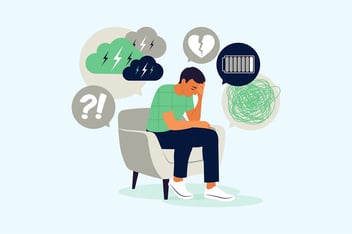Bipolar Disorder

Bipolar disorder is a mental health condition marked by significant shifts in mood, energy, and behavior. According to the American Psychiatric Association, there are five recognized types of bipolar and related disorders, distinguished by the nature, duration, and severity of mood episodes they involve.
Understanding Mood Episodes in Bipolar Disorder
Individuals with bipolar disorder undergo distinct phases where their emotions, activity levels, and actions differ markedly from their usual state. These phases are known as mood episodes, encompassing:
- Manic Episodes: Characterized by a week or more of intense euphoria, energy, or irritability. People in this state often feel an overwhelming surge of energy.
- Hypomanic Episodes: These are similar to manic episodes but less intense, requiring only four days of symptoms for a diagnosis.
- Depressive Episodes: Defined by a two-week period where an individual experiences a significant depressive state, with five or more symptoms that affect daily life.
It's possible for someone to undergo episodes where symptoms of depression and mania are mixed, either simultaneously or consecutively, known as a mixed episode.
Types of Bipolar Disorder
The American Psychiatric Association (APA) categorizes bipolar disorder into various types based on mood episode characteristics such as type, duration, and severity. According to the APA's Diagnostic and Statistical Manual of Mental Disorders, Fifth Edition (DSM-5), there are five types of bipolar disorder that may be diagnosed:
- Bipolar I Disorder
- Bipolar II Disorder
- Cyclothymic Disorder
- Other Specified Bipolar and Related Disorder
- Unspecified Bipolar and Related Disorder
The latter two categories were previously grouped under "bipolar disorder not otherwise specified (NOS)" in the DSM-IV but were separated into distinct classifications in the DSM-5.
- Bipolar I Disorder
A diagnosis of Bipolar I Disorder requires at least one episode of mania lasting a minimum of seven days, or manic symptoms severe enough to necessitate hospitalization. While depressive episodes are typical in Bipolar I, they are not a requisite for diagnosis. - Bipolar II Disorder
Bipolar II Disorder involves a pattern of both hypomanic and depressive episodes, without the occurrence of a full-blown manic episode that is characteristic of Bipolar I. - Cyclothymic Disorder
Cyclothymic disorder, or cyclothymia, involves repeated periods of hypomanic and depressive symptoms that are not intense enough to qualify as manic, hypomanic, or major depressive episodes. These symptoms must persist for at least two years, with no break in symptoms lasting longer than two months.
Even though the mood fluctuations in cyclothymia are milder than in bipolar I or II disorder, it's essential to seek treatment. These symptoms can disrupt daily life and may escalate to bipolar I or II disorder over time. - Other Specified Bipolar and Related Disorder
This diagnosis is given when bipolar disorder symptoms don't match the criteria for the other categories. Examples include having symptoms of cyclothymia that have not lasted two years, or experiencing hypomanic episodes without accompanying depressive episodes. - Unspecified Bipolar and Related Disorder
This category is used when there isn't enough information to diagnose a specific type of bipolar disorder, such as in emergency situations.
Misdiagnosis
Bipolar disorder is one of the mental health conditions most prone to misdiagnosis, often because its symptoms overlap with other disorders. Conditions commonly confused with bipolar disorder include ADHD, borderline personality disorder (BPD), clinical depression, and schizoaffective disorder. These misdiagnoses arise from similarities in symptoms but differ in crucial aspects like the duration of mood swings and the presence of episodic versus chronic symptoms.
Effective Treatments
Treatments for bipolar disorder typically involves medication and psychotherapy.
- Medications include mood stabilizers like Lithium, Depakote, and Tegretol. Antidepressants may be used for depressive episodes but are prescribed with caution to avoid triggering manic episodes. Antipsychotic medications, such as Vraylar, Latuda, Zyprexa, and Seroquel, may be used to manage psychotic symptoms, with some also approved for treating bipolar depression.
- Psychotherapy is an essential component of treatment, often in combination with medication. Effective therapies for bipolar disorder include cognitive-behavioral therapy, family-focused therapy, and Interpersonal and Social Rhythm Therapy. The choice of therapy depends on the individual's specific needs and situation.




